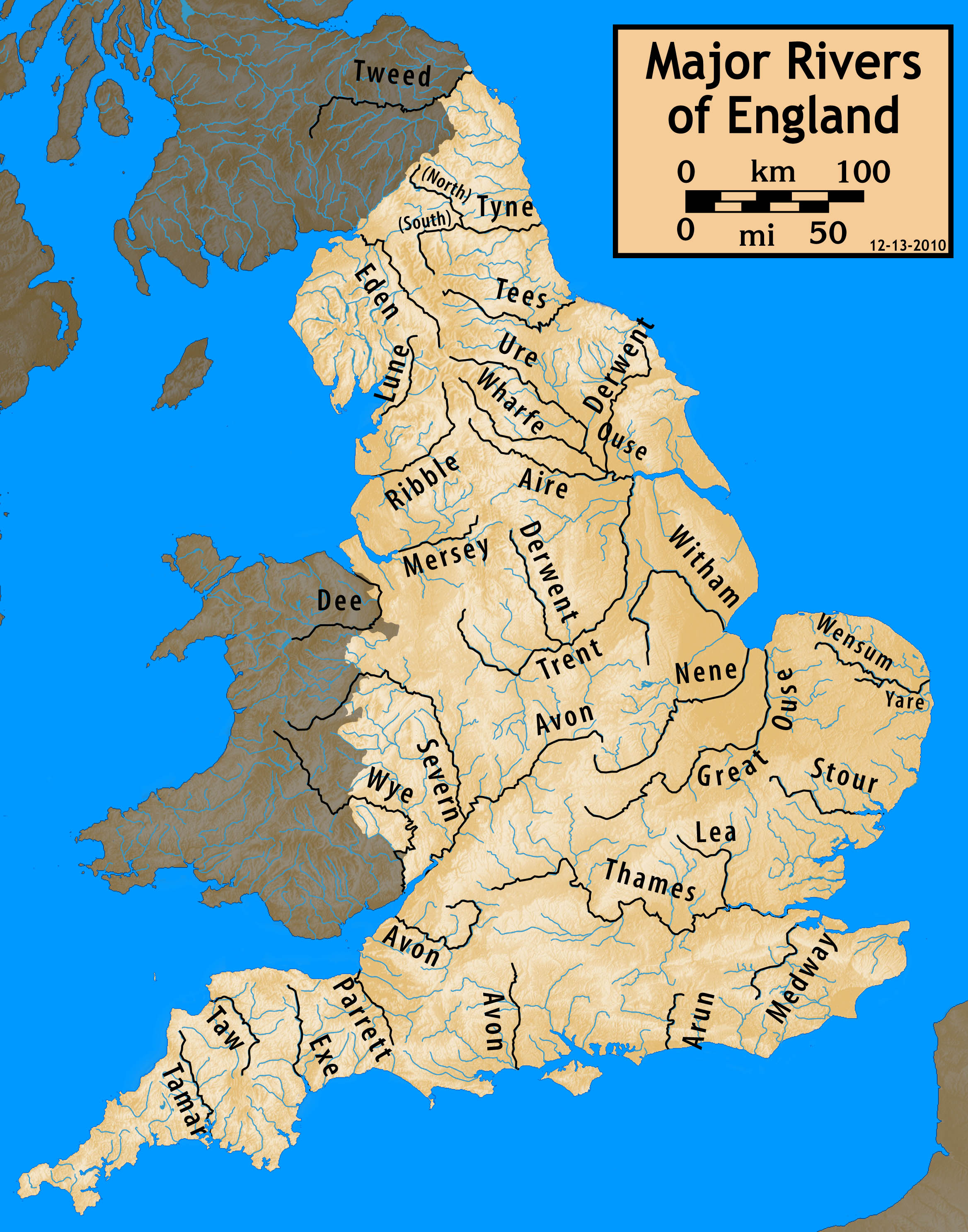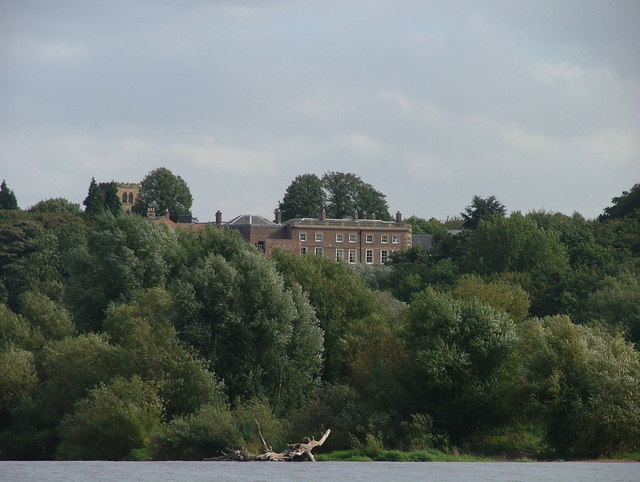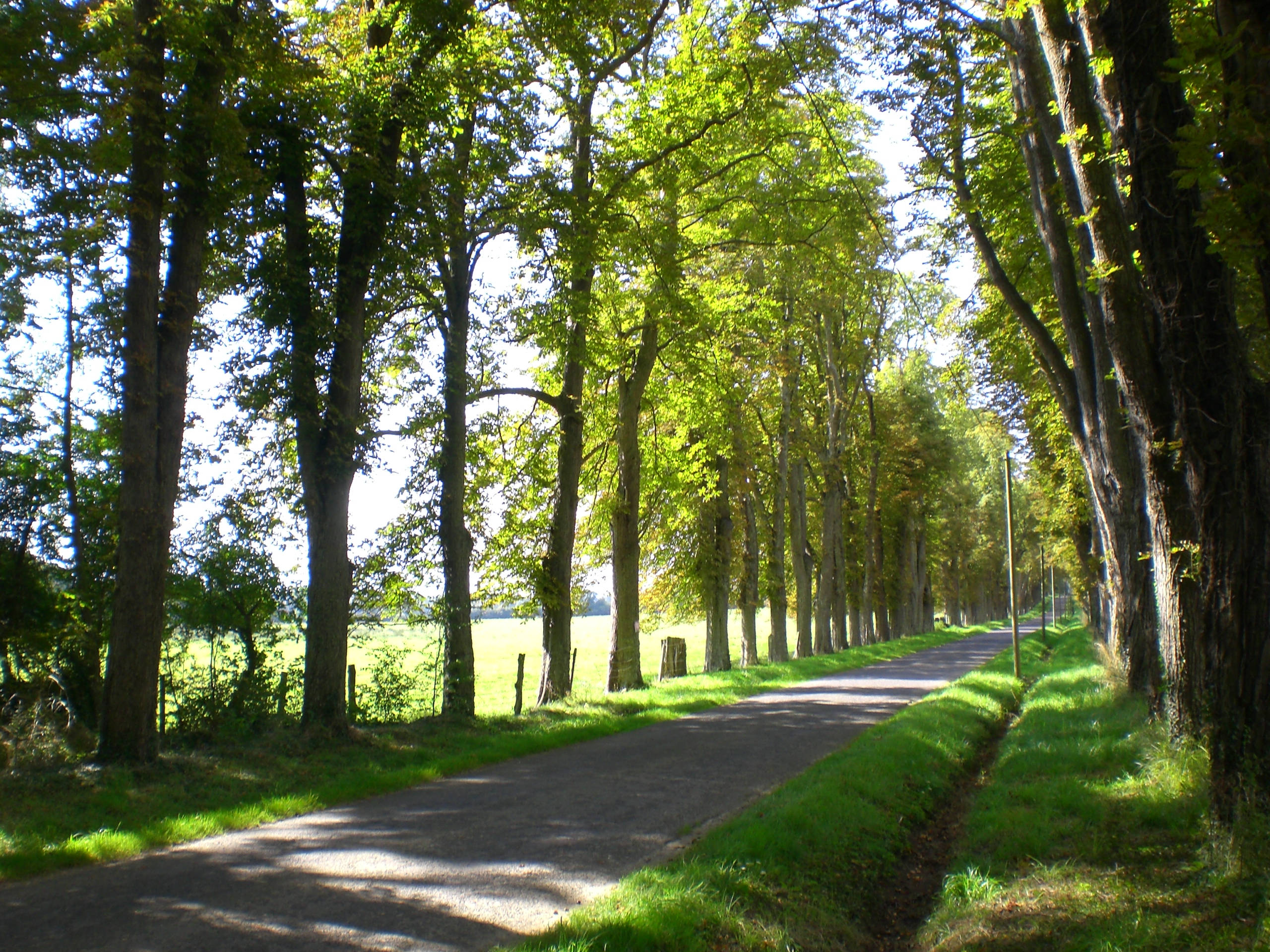|
Fairham Brook
Fairham Brook is a tributary of the River Trent that flows through Leicestershire and Nottinghamshire in England. Course The source of the brook is on the edge of the Nottinghamshire Wolds, near Old Dalby, Leicestershire. It initially flows in a northerly direction, and then turns west passing through the villages of Widmerpool, and Bunny. It crosses Bunny and Ruddington moor, and then flows north between Clifton and the village of Ruddington. The brook joins the River Trent near Silverdale, on the outskirts of Nottingham near Clifton Bridge. Catchment The catchment has an area of , which lies between that of the Polser brook and River Smite to the north, and that of the Kingston brook to the south. The brook has a number of tributaries, which are mostly unnamed, except for the stream that flows from Gotham, known as the Gotham brook, the stream that flows between Ruddington village and Mickleborough Hill which is known as Packman's Dike, and the Nethergate brook which drain ... [...More Info...] [...Related Items...] OR: [Wikipedia] [Google] [Baidu] |
England
England is a country that is part of the United Kingdom. It shares land borders with Wales to its west and Scotland to its north. The Irish Sea lies northwest and the Celtic Sea to the southwest. It is separated from continental Europe by the North Sea to the east and the English Channel to the south. The country covers five-eighths of the island of Great Britain, which lies in the North Atlantic, and includes over 100 smaller islands, such as the Isles of Scilly and the Isle of Wight. The area now called England was first inhabited by modern humans during the Upper Paleolithic period, but takes its name from the Angles, a Germanic tribe deriving its name from the Anglia peninsula, who settled during the 5th and 6th centuries. England became a unified state in the 10th century and has had a significant cultural and legal impact on the wider world since the Age of Discovery, which began during the 15th century. The English language, the Anglican Church, and Engli ... [...More Info...] [...Related Items...] OR: [Wikipedia] [Google] [Baidu] |
List Of Rivers Of England
This is a list of rivers of England, organised geographically and taken anti-clockwise around the English coast where the various rivers discharge into the surrounding seas, from the Solway Firth on the Scottish border to the Welsh Dee on the Welsh border, and again from the Wye on the Welsh border anti-clockwise to the Tweed on the Scottish border. Tributaries are listed down the page in an upstream direction, i.e. the first tributary listed is closest to the sea, and tributaries of tributaries are treated similarly. Thus, in the first catchment below, the River Sark is the lowermost tributary of the Border Esk and the Hether Burn is the lowermost tributary of the River Lyne. The main stem (or principal) river of a catchment is labelled as (MS), left-bank tributaries are indicated by (L), right-bank tributaries by (R). Note that in general usage, the 'left (or right) bank of a river' refers to the left (or right) hand bank, as seen when looking downstream. Where a named river ... [...More Info...] [...Related Items...] OR: [Wikipedia] [Google] [Baidu] |
Water Framework Directive
The Water Framework Directive 2000/60/EC is an EU directive which commits European Union member states to achieve good qualitative and quantitative status of all water bodies (including marine waters up to one nautical mile from shore) by 2015. It is a framework in the sense that it prescribes steps to reach the common goal rather than adopting the more traditional limit value approach. The Directive's aim for 'good status' for all water bodies will not be achieved, with 47% of EU water bodies covered by the Directive failing to achieve the aim. Objectives of the Directive The Directive aims for 'good status' for all ground and surface waters (rivers, lakes, transitional waters, and coastal waters) in the EU. The ecological and chemical status of surface waters are assessed according to the following criteria (see also: freshwater environmental quality parameters): * Biological quality (fish, benthic invertebrates, aquatic flora) * Hydromorphological quality such as river b ... [...More Info...] [...Related Items...] OR: [Wikipedia] [Google] [Baidu] |
Giant Redwood
''Sequoiadendron giganteum'' (giant sequoia; also known as giant redwood, Sierra redwood, Sierran redwood, California big tree, Wellingtonia or simply big treea nickname also used by John Muir) is the sole living species in the genus ''Sequoiadendron'', and one of three species of coniferous trees known as redwoods, classified in the family Cupressaceae in the subfamily Sequoioideae, together with ''Sequoia sempervirens'' (coast redwood) and ''Metasequoia glyptostroboides'' (dawn redwood). Giant sequoia specimens are the most massive trees on Earth. The common use of the name ''sequoia'' usually refers to ''Sequoiadendron giganteum'', which occurs naturally only in groves on the western slopes of the Sierra Nevada mountain range of California. The giant sequoia is listed as an endangered species by the IUCN, with fewer than 80,000 trees remaining. Since its last assessment as an endangered species in 2011, it was estimated that another 13–19% of the population (or 9,761–13,63 ... [...More Info...] [...Related Items...] OR: [Wikipedia] [Google] [Baidu] |
Chestnut
The chestnuts are the deciduous trees and shrubs in the genus ''Castanea'', in the beech family Fagaceae. They are native to temperate regions of the Northern Hemisphere. The name also refers to the edible nuts they produce. The unrelated horse chestnuts (genus ''Aesculus'') are not true chestnuts, but are named for producing nuts of similar appearance that are mildly poisonous to humans. True chestnuts should also not be confused with water chestnuts, which are tubers of an aquatic herbaceous plant in the sedge family Cyperaceae. Other species commonly mistaken for chestnut trees are the chestnut oak ('' Quercus prinus'') and the American beech (''Fagus grandifolia''),Chestnut Tree in chestnuttree.net. both of which are also in the Fagaceae family. |
Clifton Hall, Nottingham
The Manor of Clifton was a historic manor situated near the City of Nottingham, England. The manor house, known as Clifton Hall is situated on the right bank of the River Trent in the village of Clifton, Nottinghamshire, (). about miles south-west of the historic centre of the City of Nottingham, now partly the campus of Nottingham Trent University and partly a large council estate of modern housing. The Hall is a Grade I listed building, and is situated within the Clifton Village Conservation Area. Retrieved on 25 September 2008. Clifton Hall was remodelled in the late 18th century in Georgian style. The manor was held by the ''de Clifton'' (later ''Clifton'') family from the late 13th century to the mid-20th century. In 2008 Clifton Hall rose to national prominence when it was reported in tabloid newspapers that its millionaire owner, Anwar Rashid, and his family had left the South Wing of the house and stopped paying the mortgage because they believed it was haunte ... [...More Info...] [...Related Items...] OR: [Wikipedia] [Google] [Baidu] |
Avenue (landscape)
In landscaping, an avenue (from the French language, French), alameda (from the Portuguese language, Portuguese and Spanish language, Spanish), or allée (from the French), is traditionally a straight path or road with a line of trees or large shrubs running along each side, which is used, as its Latin source ''venire'' ("to come") indicates, to emphasize the "coming to," or ''arrival'' at a landscape or architecture, architectural feature. In most cases, the trees planted in an avenue will be all of the same species or cultivar, so as to give uniform appearance along the full length of the avenue. The French term ''allée'' is used for avenues planted in parks and landscape gardens, as well as boulevards such as the ''Grande Allée'' in Quebec City, Canada, and ''Karl-Marx-Allee'' in Berlin. History The avenue is one of the oldest ideas in the history of gardens. An Avenue of Sphinxes still leads to the tomb of the pharaoh Hatshepsut. Avenues similarly defined by guardian stone ... [...More Info...] [...Related Items...] OR: [Wikipedia] [Google] [Baidu] |
Keyworth
Keyworth is a large Village of Nottinghamshire, England. It is located about 6 miles (11 km) southeast of the centre of Nottingham. It sits on a small, broad hilltop about 200 feet above sea level which is set in the wider undulating boulder clay that characterises the area south of Nottingham. Keyworth is twinned with the French town of Feignies. Demographics A 2001 census which was conducted indicates that the civil parish had a population of 6,920, reducing to 6,733 at the 2011 census. Crime Keyworth was the home of Colette Aram who was murdered by Paul Stewart Hutchinson in 1983. Transport The bus company Trentbarton operates The Keyworth service from Keyworth to Nottingham via Plumtree, Tollerton, Edwalton and West Bridgford, daily, from early in the morning until around midnight (with additional late-night buses on Fridays and Saturdays). Keyworth is approximately 8 miles to the closest railway station, Nottingham railway station, Keyworth once had its own stati ... [...More Info...] [...Related Items...] OR: [Wikipedia] [Google] [Baidu] |
Common Kingfisher
The common kingfisher (''Alcedo atthis''), also known as the Eurasian kingfisher and river kingfisher, is a small kingfisher with seven subspecies recognized within its wide distribution across Eurasia and North Africa. It is resident in much of its range, but migrates from areas where rivers freeze in winter. This sparrow-sized bird has the typical short-tailed, large-headed kingfisher profile; it has blue upperparts, orange underparts and a long bill. It feeds mainly on fish, caught by diving, and has special visual adaptations to enable it to see prey under water. The glossy white eggs are laid in a nest at the end of a burrow in a riverbank. Taxonomy The common kingfisher was first described by Carl Linnaeus in the 10th edition of his ''Systema Naturae'' in 1758 as ''Gracula atthis''. The modern binomial name derives from the Latin ', 'kingfisher' (from Greek , '), and ''Atthis'', a beautiful young woman of Lesbos, and favourite of Sappho. The genus ''Alcedo'' comprises ... [...More Info...] [...Related Items...] OR: [Wikipedia] [Google] [Baidu] |
Main River
Main rivers () are a statutory type of watercourse in England and Wales, usually larger streams and rivers, but also some smaller watercourses. A main river is designated by being marked as such on a main river map, and can include any structure or appliance for controlling or regulating the flow of water in, into or out of a main river. Every other open watercourse in England and Wales is determined by statute as an 'ordinary watercourse'. England The Environment Agency carries out maintenance, improvement or construction work on main rivers to manage flood risk as part of its duties and powers as defined by the Flood and Water Management Act 2010. The Environment Agency's powers to carry out flood defence works apply to main rivers and the sea only; they do not apply to ordinary watercourses. The Environment Agency does not ''have'' to maintain or construct new works on main rivers or the sea and it is unlikely to maintain a watercourse to improve its amenity or to stop erosion t ... [...More Info...] [...Related Items...] OR: [Wikipedia] [Google] [Baidu] |







